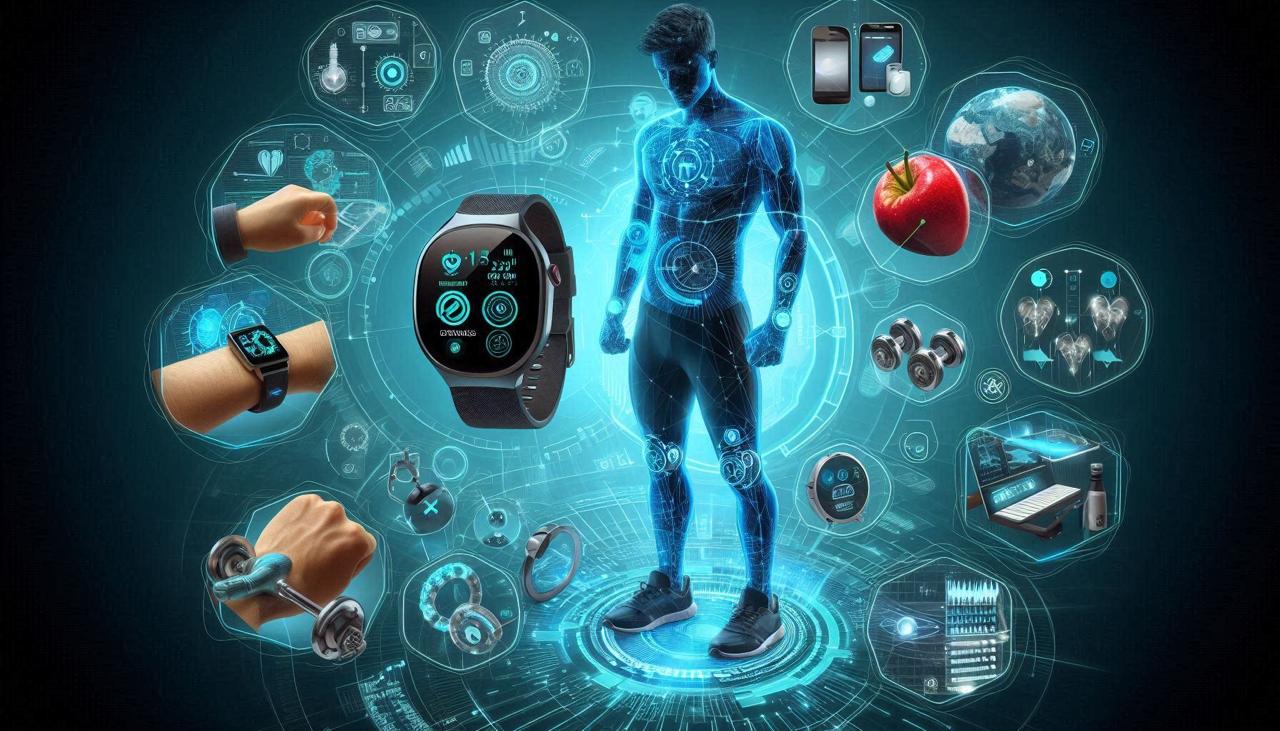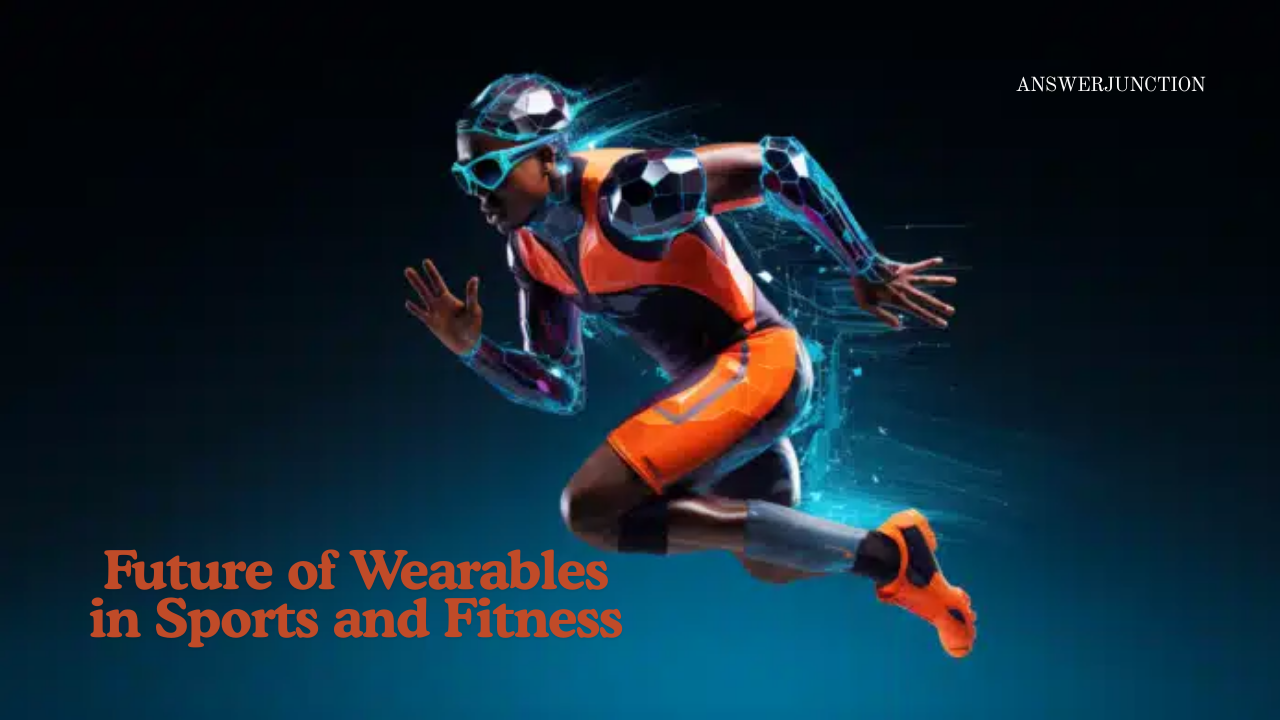The landscape of sports and fitness is undergoing a transformative evolution, driven by the rapid advancement of wearable technology. Wearables, including smartwatches, fitness trackers, and heart rate monitors, are becoming indispensable tools for athletes and fitness enthusiasts alike. These devices not only enhance performance but also provide valuable insights into health and wellness, paving the way for a future where data-driven decisions dominate the sports arena. As we delve into the future of wearables in sports and fitness, it becomes evident that this technology is not just a trend; it’s a fundamental shift that will redefine how we train, compete, and maintain our overall health.
The Current State of Wearables in Sports

The adoption of wearable technology in sports and fitness has already seen remarkable growth. Devices such as smartwatches from brands like Apple and Garmin, along with fitness trackers like Fitbit, have gained popularity due to their ability to track metrics such as heart rate, steps taken, calories burned, and sleep patterns. Athletes utilize these devices to monitor their training intensity, recovery, and overall health. The integration of GPS technology allows for precise tracking of distance and pace during outdoor activities, making wearables essential for runners and cyclists.
Additionally, the rise of smart clothing—such as shirts and shorts embedded with sensors—has further broadened the scope of wearables in sports. These garments can measure muscle activity, heart rate, and even body temperature, providing athletes with a comprehensive view of their physical state during workouts. As sports organizations and coaches embrace data analytics, the insights gleaned from these wearables enable more personalized training regimens and strategies.
The Role of Data Analytics in Enhancing Performance
The future of wearables in sports and fitness will heavily rely on data analytics. The continuous stream of data collected by wearables presents an opportunity to harness advanced analytics and machine learning to draw actionable insights. This capability enables athletes to fine-tune their training regimens based on their physiological responses, ultimately leading to improved performance.
For example, predictive analytics can forecast an athlete’s performance based on historical data. Coaches can identify trends, strengths, and weaknesses, allowing them to customize training plans to address specific needs. Moreover, wearables can alert athletes to potential injuries by monitoring patterns that precede physical strain or fatigue. This proactive approach to injury prevention will revolutionize how athletes prepare for competition and manage their training loads.
The Emergence of AI-Driven Wearables
Artificial Intelligence (AI) is poised to play a significant role in the future of wearables. As technology continues to advance, we can expect wearables equipped with AI capabilities to become more prevalent. These devices will not only collect data but also analyze it in real-time, providing instant feedback to users. For instance, AI algorithms could evaluate an athlete’s biomechanics during a run and suggest adjustments to improve efficiency and reduce the risk of injury.
AI-driven wearables could also personalize fitness experiences based on individual goals and performance metrics. By understanding users’ habits and preferences, these devices could offer tailored workout plans, nutrition advice, and recovery strategies. The potential for AI to create a more immersive and effective fitness journey is immense, making it an exciting frontier in the evolution of wearables.
Enhanced User Experience Through Integration
As wearables evolve, the integration of technology into our daily lives will further enhance user experience. The future of wearables will likely see increased interoperability between devices and platforms. For instance, fitness apps will seamlessly sync data from wearables to provide users with comprehensive insights into their health and performance. This level of integration will empower users to monitor their fitness journeys holistically, making informed decisions about their training and lifestyle.
Moreover, wearables will increasingly leverage augmented reality (AR) and virtual reality (VR) to create immersive training experiences. Athletes may train in simulated environments that replicate real-world conditions, allowing them to prepare for competitions with unparalleled realism. This integration of AR and VR will not only enhance training efficacy but also make workouts more engaging and enjoyable.
The Future of Wearables in Professional Sports
In professional sports, wearables are set to become integral components of athlete training and performance analysis. Sports teams and organizations are already investing in advanced wearable technology to gain a competitive edge. The ability to monitor an athlete’s performance metrics in real time during training sessions will revolutionize coaching methods. Coaches will have access to a wealth of data that can inform their strategies, training regimens, and player selections.

Furthermore, the data collected by wearables can be used to negotiate contracts and optimize player health. Athletes who consistently perform at their peak are likely to command higher salaries. By showcasing performance metrics derived from wearables, athletes can strengthen their negotiating positions and secure better deals. This intersection of technology and sports economics will reshape how contracts are structured and how talent is evaluated.
Health and Fitness Beyond Competition
While the focus of wearables has often been on professional sports, their future in health and fitness extends beyond competition. The growing awareness of health and wellness among the general population has fueled demand for wearables that cater to everyday users. Devices that monitor heart health, sleep patterns, and stress levels are becoming essential tools for individuals seeking to improve their overall well-being.
Wearable technology has the potential to empower users by providing them with actionable insights into their health. For instance, users can receive alerts about elevated heart rates, suggesting when to engage in physical activity or when to rest. Additionally, wearables can help track long-term health trends, allowing individuals to make informed decisions about their lifestyle choices. The democratization of health data through wearables represents a shift toward preventive care, enabling users to take charge of their health proactively.
Challenges and Considerations for the Future
Despite the exciting prospects for wearables in sports and fitness, challenges remain. Data privacy and security are paramount concerns, as wearables collect sensitive health information. Users must be assured that their data is protected and that they have control over how it is used. Striking a balance between functionality and privacy will be crucial for the widespread adoption of wearable technology.
Additionally, the market is becoming increasingly saturated with various devices, making it essential for manufacturers to differentiate their products. Consumers seek wearables that are not only functional but also aesthetically pleasing and comfortable to wear. As the competition intensifies, brands must innovate and prioritize user experience to stay relevant in the ever-evolving landscape of wearable technology.
The Road Ahead: Trends Shaping the Future of Wearables
As we look to the future, several key trends are poised to shape the evolution of wearables in sports and fitness. First and foremost, the integration of advanced sensors will enhance the capabilities of wearable devices. We can expect wearables that monitor a wider array of metrics, such as hydration levels, body temperature, and even blood oxygen saturation, providing a more comprehensive picture of health and performance.
Second, the continued rise of health-focused applications and platforms will drive the demand for wearables. Users are increasingly looking for devices that not only track fitness but also offer insights into nutrition, mental health, and recovery strategies. Wearable manufacturers that prioritize holistic health approaches will likely thrive in this evolving market.
Finally, sustainability will play a significant role in the future of wearables. As consumers become more environmentally conscious, there will be a demand for eco-friendly materials and ethical manufacturing practices. Companies that prioritize sustainability in their product design and supply chains will resonate with consumers and stand out in a competitive landscape.

The future of wearables in sports and fitness is an exciting frontier filled with potential. From data analytics and AI integration to enhanced user experiences and health insights, the advancements in wearable technology will redefine how athletes train and how individuals approach their health and wellness. As challenges related to data privacy and market saturation persist, innovation will be essential for manufacturers to maintain relevance in this dynamic industry. Ultimately, wearables have the power to empower users, enhance performance, and promote healthier lifestyles, making them a cornerstone of the future in sports and fitness. As we embrace this technology, the journey toward optimal performance and well-being is set to become more engaging, personalized, and data-driven than ever before.



